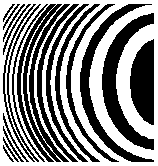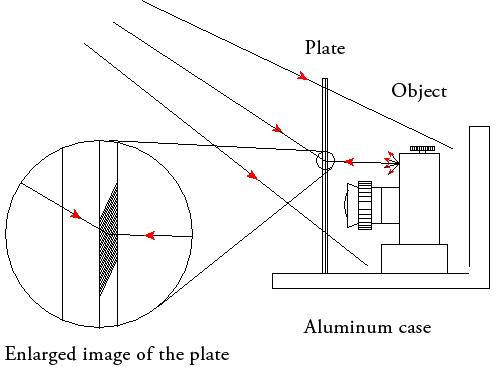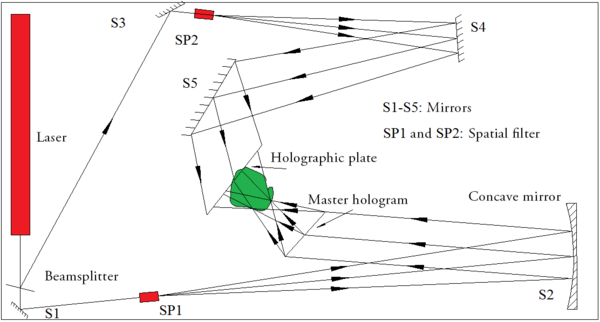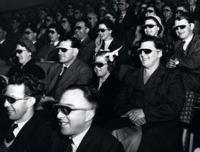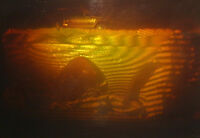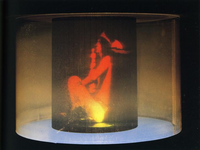Hologram
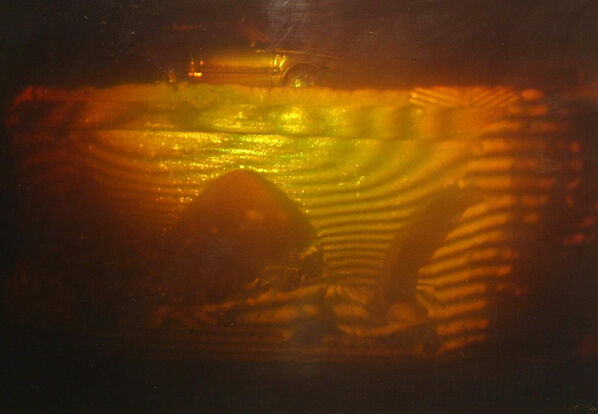
The holographic technique
The holographic technique uses a laser to create a pattern within a light-sensitive gelatine layer, which is placed on a glass plate. A development process produces a permanent pattern which, when illuminated, creates a three-dimensional image – a hologram. The principles of holographic technology were described in 1948 by Dennis Gabor, the Hungarian physicist and Nobel Prize winner (1971).
To produce a hologram, a light source requires a coherent¹, monochromatic² and parallel light³. Therefore, a laser that provides this type of light is used.
A hologram consists of an interference pattern stored on a photographic sheet or film. This pattern is due to the interaction between two different rays of light:
- Object beam - the part of the beam reflected from the object to the photographic plate, i.e. the beam contains information about how the object looks.
- Reference beam - the part of the beam that goes directly from the laser to the plate without touching the object.
When the two rays of light coincide with the same point on the plate, they can either reinforce or weaken each other. This is called the superposition principle – light is a wave movement and in this instance the total waveform equals the sum of the amplitude of the interfering waves. An easier explanation is that two co-operating light waves can give total extinction, there is no light at all, or amplify each other so that the light is four times as strong as it was from the beginning. The intensity of light is squarely dependent on the resultant light wave amplitude.
When you look at the developed plate, nothing of the photographed object can be seen. On closer examination, an interference pattern can be distinguished. This pattern is the result of the interaction between object and reference light. The film is differently exposed depending on how the two light waves interacted (interfered) with each other. When illuminating the pattern with a copy of the reference light, the object light is restored and a three-dimensional image of the object appears.
¹ Variations of the same frequency and constant phase difference are referred to as coherent.
² Monochromatic means single-coloured. Light with a certain wavelength can only have a definite colour.
³ Parallel light is directed so that the light rays never intersect.
Optical settings
Holograms in everyday life
Movies and TV
In Japan, there is now a system for holographic film. A special display and three lasers are used to generate and show moving three-dimensional colour images. There are also ideas to develop holographic TV, but there is still no movie camera that can produce holographic movies for this media. This photo, from the National Archives in Great Britain, shows an audience watching 3D movies during the Festival of Britain in 1951.
Photo: Audience wearing special glasses watch a 3D "stereoscopic film" at the Telekinema on the South Bank in London during the Festival of Britain. May 11th, 1951. Source: The National Archives UK
Art
Artists make use of the hologram. Here are some pages you can look at:
The Center for the Holographic Arts (HoloCenter), Long Island, New York, USA
The Jonathan Ross Hologram Collection, London, England
Holomedia Hologram, Stockholm, Sweden
Photo: First Cylindric Crono-Hologram. Portrait Of Alice Cooper's Brain by Salvador Dali 1973. Source: wikiart.org
Registration and archiving
Hologram can be used to register and archive three-dimensional objects such as delicate and valuable museum objects.

